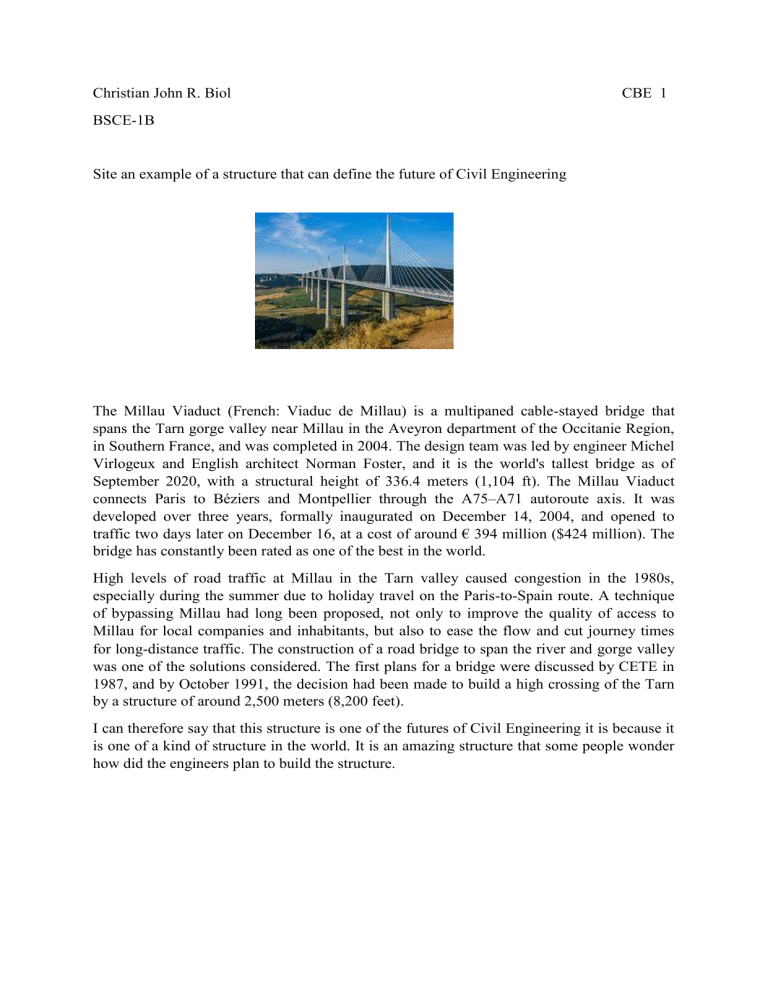
Christian John R. Biol CBE 1 BSCE-1B Site an example of a structure that can define the future of Civil Engineering The Millau Viaduct (French: Viaduc de Millau) is a multipaned cable-stayed bridge that spans the Tarn gorge valley near Millau in the Aveyron department of the Occitanie Region, in Southern France, and was completed in 2004. The design team was led by engineer Michel Virlogeux and English architect Norman Foster, and it is the world's tallest bridge as of September 2020, with a structural height of 336.4 meters (1,104 ft). The Millau Viaduct connects Paris to Béziers and Montpellier through the A75–A71 autoroute axis. It was developed over three years, formally inaugurated on December 14, 2004, and opened to traffic two days later on December 16, at a cost of around € 394 million ($424 million). The bridge has constantly been rated as one of the best in the world. High levels of road traffic at Millau in the Tarn valley caused congestion in the 1980s, especially during the summer due to holiday travel on the Paris-to-Spain route. A technique of bypassing Millau had long been proposed, not only to improve the quality of access to Millau for local companies and inhabitants, but also to ease the flow and cut journey times for long-distance traffic. The construction of a road bridge to span the river and gorge valley was one of the solutions considered. The first plans for a bridge were discussed by CETE in 1987, and by October 1991, the decision had been made to build a high crossing of the Tarn by a structure of around 2,500 meters (8,200 feet). I can therefore say that this structure is one of the futures of Civil Engineering it is because it is one of a kind of structure in the world. It is an amazing structure that some people wonder how did the engineers plan to build the structure.





